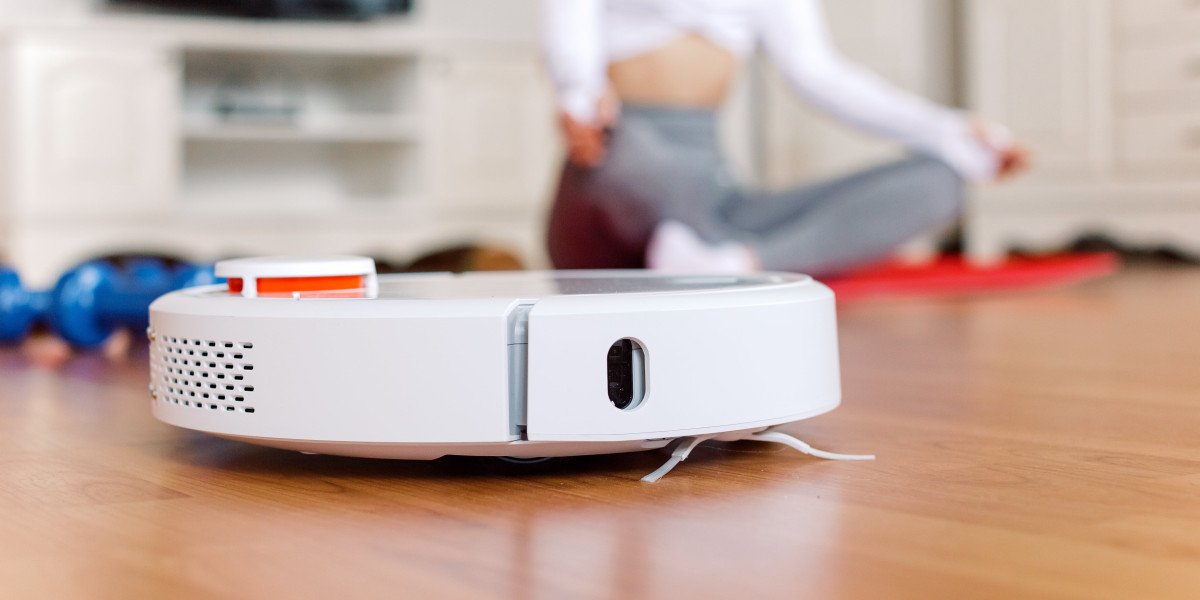Self Emptying Robot Vacuum
A self-emptying robot vacuum is among the best items you can get for your home. It is more efficient and hands-free particularly for those who have larger homes.
The dock of a robot rests in tiny dustbins that can be emptied every few days or more frequently depending on the model. Self-emptying bases are often large and heavy.
It's more practical
If you're fed up of emptying your robot's dustbin after each cleaning cycle, consider splurging on an auto-emptying model. These bases hold dirt in a bigger container and are usually classified by the number of days (or cleaning sessions) they can hold before you need to dispose of them, which means that your machine will be less likely to introduce dust clumps in the air, which can make allergies worse.
These models that self-empty tend to have more features than standard robot vacs, which makes them even more practical. For instance, some models come with an interactive map of your home that allows you to label different rooms or designate virtual "no-go" zones for specific areas. Others can automatically return to their base to recharge after finishing an exercise in cleaning or when they are power-depleted. They could also have a variety of cleaning modes, such as mop, spot clean and auto-mop. Some offer voice control with Alexa or Google Assistant.
But be prepared for a loud process. If the bin is full the machine will usually take a minute to empty it, which could be disruptive. You can sometimes change the settings so it's quieter but it will be louder than other kinds of vacuums. Certain vacuums come with DND mode which is helpful for those who use the device in your bedroom or other places in which it might disturb you.
Robotic vacs can also become stuck in furniture or door thresholds, get tangled in things like cords, shoelaces or pet toys or even simply lose their way and send an SOS signal to you for help. You'll need to physically put the robot vacuum back in its base to reorient it and resume its cleaning session or charging session. It's not the most pleasant experience however, but you'd need to do it manually with any other vacuum.
In the end, self-emptying robot vacuums offer a lot of convenience. They're worth the cost if you don't wish to empty your robot's trash bin each time it cleans. It is important to keep in mind that these robot vacuums aren't suited to all homes. Their dirt capacity is less than a standard vacuum, and their base may not be large enough for certain households.
It's safer
While a robot vacuum is more advanced than your traditional stick or barrel vacuum, it's still a machine that has moving parts that can be destroyed just as easily. This makes it more expensive and more difficult to repair than a traditional vacuum. Many robot vacuums also require more maintenance than regular vacuums, including cleaning the brushes and filters. Some robot vacuums are equipped with extra components, like sensors, a computer mind and apps integration. This makes them more difficult to repair and use.
The good news is that a lot of these issues can be prevented by an auto-emptying robot vacuum. Manufacturers rate their products by the number of days or cleaning sessions worth of dirt that the external canister is able to hold generally between 30 and 60 days. If you have to empty your robot's canister every few weeks, it is easy to overstuff the canister and then lose all your dirt. However, if your robot auto cleans its canister in a timely manner, it will not only be much more user-friendly and run, but you'll also be able run it more often.
Many manufacturers also sell additional filters and brush kits which can be used to replace worn-out ones. This will allow your robot to last longer and perform at its best. It's more cost-effective than the basic model. Some brands also offer zoned saving features, which permit you to create zones of no-go areas to ensure that your robot does not accidentally clean certain areas.
Most of these models have a quiet option, which will make it less likely that you'll be disturbed while the machine works. This is particularly helpful if you have small children or pets. If you have a smart house or work from home, then you can schedule the robot to visit when you're not at home.
It's less expensive
A regular robot vacuum can only hold so much dirt before the dust bin needs emptying. The dust is released back into the air, which could cause sneezing, and even a rash in allergy-prone households. Self-emptying robot vacs eliminate this issue out of the picture because they automatically empty dirt into a separate bin. The best hardwood floor robot vacuum and mop models last for months or even years without needing to empty the bin.
These robots are great for families that are busy, as they can keep the house tidy without the need to stop to empty the base. These robots are especially useful in areas that have plenty of mess, like the living room or kitchen, where children and pets leave a mark. They're also a great investment for older homes that are struggling to keep tidy.
As more robotic vacs that have self-emptying bases hit the market and become more affordable, they're becoming more accessible. The majority cost $400 or less. This is a huge savings over the It's about $1,400 to buy an ordinary robot vacuum. Furthermore, these vacs are more flexible than the traditional models. Some can work in dry and wet mode, allowing you to use them for wet and sticky spills as well as on soiled carpets.
They can also use apps to schedule cleaning times and sync with digital voice assistants like Alexa, Google Assistant or Amazon's Echo. This makes them easy to use for those who don't have the patience or time to control the robot vacuum with the remote.
There are some disadvantages to this technology, however. The bases are big and take up a lot more floor space. They can be heavy, which adds to the price of the device. Lastly, the emptying process can be noisy and slow.
While self-emptying robot vacs are an excellent method of reducing time and effort, you'll still have to clean the rest of your home regularly. This includes tying up loose items, removing wet spills and wiping down the sensors and charging contacts on the robot's base as well as its dock.
It's also more eco-friendly.
The most efficient robot vacuums that self-empty tend to be more eco-friendly. The docking station of the vacuum functions as a bin to collect debris from cleaning cycles. The dustbin can be emptied and replaced with a brand new one, much like a regular vacuum. The bin is filtered to help trap fine dust that would otherwise be reintroduced into the air in your home making these robots an excellent choice for homes with allergies or respiratory conditions.
However, despite their improved ecological sensitivity, self-emptying robots do have disadvantages. They can be noisy, for instance. The noise can be louder than a vacuum motor and occur at random intervals during the course of. This can be distracting if you're doing work or cooking simultaneously.
Self-emptying robots are a problem because they can take up a lot of space on your floor. They typically have a large base that can hold months or even weeks of garbage. This is an issue in small apartments and houses where every inch counts. If you select a model that also mop, the water tank is large and will require a larger floor space to keep it from spilling over or overflowing.
Self-emptying robots are also more difficult to set up. You'll need to find an area for the base that's not too difficult to access and then you'll need to clean the charging contacts and sensors before you are able to use them. In addition, most of these models require a first, non-cleaning run to make an outline of your home. Different brands employ different mapping techniques, such as smart cameras or LIDAR (Light detection and range) which functions similarly to radar.
In the end, a robot vacuum that can self-clean itself is an excellent investment. It will make your life much simpler. If you are a busy parent who has to juggle children, work and other tasks, the ability to turn off the robot and let it take care of itself will be very helpful.







